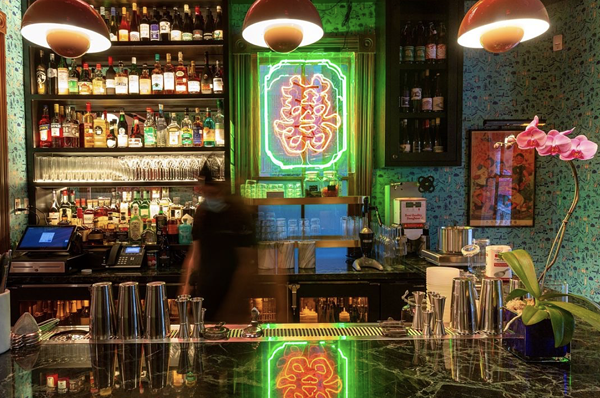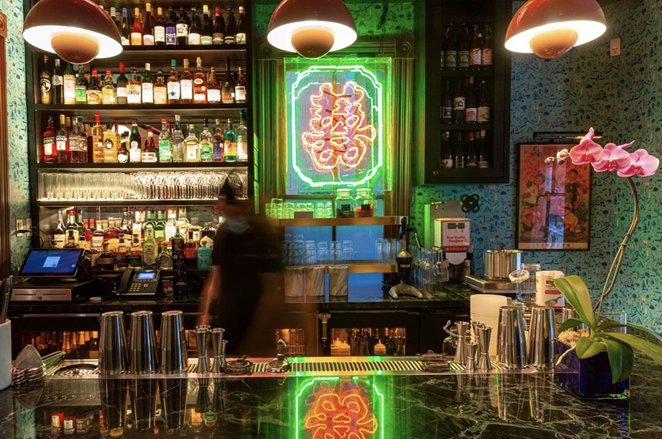Restaurant Rundown: The pandemic played a part in virtually every 2020 food service trend in San Antonio

As per usual, restaurants came and went, chefs left (and returned) and concepts gained steam and fizzled out in San Antonio this year.
No one in the food service industry, however, was quite prepared for the global pandemic, which factored into nearly every food trend we bore witness to in 2020.
Here’s a rundown of the big changes that hit the Alamo City restaurant scene this year.
1. Socially conscious and sustainable dining
As COVID-19 disrupted supply chains, especially meat supplies, some local farmers and ranchers experienced sales upticks as more consumers turned to them to fill their needs. “At the onset of the pandemic, our farmers were selling more meat than ever before, because restaurants were shutting down and meat shortages started happening,” chef and butcher Joe Saenz said. After the closure of his Swine House Bodega in the thick of the pandemic, Saenz launched the Swine House Butcher Series, an online butcher shop that allows customers to purchase locally raised specialty meats. “If any good can come out of this year, I hope for the survival of the farmers that are making the huge sacrifices for the sustainable raising of these animals.”
2. Food service workers pivoting on their talents
While bars and restaurants were shuttered by state and local mandates, food service workers turned to their other talents to make ends meet. In August, for example, bar industry veteran Ana Cabrera launched Suck It Up S.A., a business selling everything-but-the-booze cocktail kits that let folks sip craft cocktails from the comfort of home. Since the launch, Cabrera has expanded into custom juice blends and baked sweets.
3. Leveraging technology
Online ordering — particularly mobile ordering — was already growing pre-pandemic, but it soared to new heights this year as customers looked for safer ways to dine during the COVID crisis. Back in March, Mike Nguyen — the technologically-inclined chef and owner of Northwest San Antonio’s Noodle Tree — offered to help other local restaurants set up menus through QR code technology, which was widely underutilized in the food scene. Other eateries integrated more online ordering capabilities into their websites.
4. Bars doing curbside, takeout and delivery
Restaurants were already acclimated with the appeal of takeout and delivery before the pandemic gained steam, but local bar owners were finally allowed to embrace those options once Gov. Greg Abbott approved alcohol to-go earlier in the pandemic. Jessica Marinez and Amber Hernandez — co-owners of Picks Bar on the city’s North side and St. Mary’s Strip venue The Amp Room — took the order in stride, unveiling two cocktail-delivery buses to meet the need. The refurbished vehicles feature a bar, solar panels and an aggressive sound and lighting system with karaoke capabilities. “We’re super-grateful that we’ve been able to adapt like this and do something new,” Hernandez said.
5. Non-alcoholic beverages
Increasingly focused on mental health and physical wellness, many consumers joined the spirit-free movement this year and took a pass on booze. While the term “dry bar” isn’t new, the Alamo City welcomed the first of its kind this year, thanks to brothers Rogelio and Michael Sanchez. The new venture, HASH — short for Heal and Spread Healing — focuses on sober and healthy options such as CBD-infused mocktails, faux brews, tea, coffee and vegan eats. Other SA drinkeries also expanded their alcohol-free offerings.
6. Instagrammable aesthetics
This year brought a slew of aesthetically delightful restaurants to the Alamo City. Among the most notable are new Asian American eatery Best Quality Daughter — which displays dainty SA-centric wallpaper — and Tony’s Siesta, a revival of a longtime downtown-area bar now given an extra dose of hip by hot-pink neon signs. Frida, an upscale Mexican eatery that opened in June, even features a purple-hued bar that throws off sexy vibes and a custom-made cobalt-blue grand piano located in its dining area.
7. Ghost kitchens
San Antonio’s ghost kitchen game beefed up this year as more people opted to dine at home. As a result, the demand for food-delivery apps grew exponentially — along with the need for certified and inspected commercial kitchen space where chefs can operate sans storefront. “I had been talking with my brothers about opening a food stand before the pandemic that would be set up in front of bars,” said Ben Cardenas, owner of Tidy Ben’s, a vegan sloppy Joe outfit. “A ghost kitchen allows us to get our product out there without the overhead of a brick and mortar or being tied to a particular area.”
8. Self-serve and prepared foods
As dining room space became limited and customers looked for ways to enjoy chef-prepared foods at home, local businesses amped up their ready-to-eat options. For smaller operations, restauranteurs had to combat capacity-limiting mandates that forced dining rooms to sit empty. The Magpie and The Farmer’s Butcher, both located the East Side’s Hackberry Market, for example, both began offering boxed lunches and prepared foods to-go.
9. Culinary mashups
While we’ve been warned against commingling with friends and family for the past nine months, culinary directions have certainly been blending in new restaurants across the Alamo City. The revamped Esquire Tavern’s mix of Chilean, Argentinian and Texan culinary touches, for example, shows local chefs’ eagerness to offer thoughtful mashups that introduce food lovers to new, yet somehow familiar, flavors. The Esquire’s spin on a pulled pork sandwich braises the expected pork butt with ancho chilies, tops it with sumac slaw and tamarind barbecue sauce, and serves it in a locally baked bun.
10. The resilience of food service workers
Servers expose themselves daily to potential COVID-19 infection for around $5 an hour, dealing with irritable guests, changing regulations and dwindling tips. If ever there was a group conditioned for working in a pressure cooker of stress, it’s restaurant and bar staff. Even as the pandemic wreaks havoc on their industry, they’ll dust themselves off, knock back a shot of whiskey and take each day in stride. SA’s foodservice community is many things. Yielding isn’t one of them.
So many restaurants, so little time. Find out the latest San Antonio dining news with our Flavor Friday Newsletter.

















